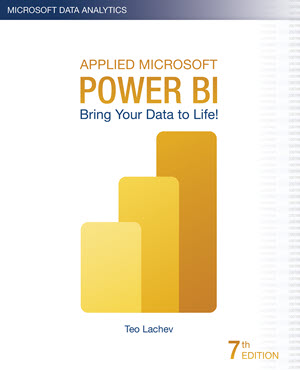-
Transcend T-SQL Limitations with SQL Server 2005 CLR Objects
October 1, 2006 / No Comments »
One of the coolest SQL Server 2005 feature is .NET CLR objects. When use wisely, CLR integration can solve many nagging problems with T-SQL. For example, you cannot pass columns from an outer SQL statement to a TBF even though it returns one row. Or, for some obscure reason, you cannot use dynamic execution (EXEC statement) inside a scalar –valued function. Yet, you may need to use the same scalar-valued function with an arbitrary column. In comparison, the sky is the limit about what a CLR stored procedure or a CLR UDF can do. Here is an extract from a real-life CLR UDF written in C# that returns the YTD aggregated value for a given measure: [Microsoft.SqlServer.Server.SqlFunction(DataAccess = DataAccessKind.Read, SystemDataAccess = SystemDataAccessKind.Read)] public static SqlDecimal YTD(int companyID, DateTime financialPeriod, string measure) { using (SqlConnection conn = new SqlConnection("context connection=true")) { conn.Open(); SqlCommand cmd = new SqlCommand(String.Format("SELECT SUM({0})...
-
Office 2007 Business Intelligence Videos
September 27, 2006 / No Comments »
Microsoft has released several cool Business Intelligence-related webcasts that target the forthcoming Office 2007. The webcasts are taken from the corresponding breakout session delivered at the Microsoft Office System Developers Conference 2006.
-
The Many-to-many Revolution
September 25, 2006 / No Comments »
One of the major UDM enhancements that transcends the boundaries of traditional OLAP is flexible dimension relationships, including many-to-many, referenced, and fact relationships. Marco Russo, who helped me tremendously with my Analysis Services book, ha s just published a very comprehensive whitepaper (shall we call it a mini book?) about many-to-many dimension relationships. I had the pleasure to be one of the reviewers. For those who are not familiar with his work, Marco is one of the few people on this planet that has deep understanding and real world experience with Analysis Services since its early stages. Thus, this whitepaper is a valuable resource that discusses practical implications of the UDM many-to-many relationships. The real-life scenarios presented in the whitepaper unlocks the mysteries of this revolutionary OLAP concept. Don't forget to check Marco's blog and his SQLBI.EU website for more UDM insights. Great work, Marco, and looking forward to a...
-
Long Lines
September 11, 2006 / No Comments »
You will probably never run into this issue unless you have very wide tables but here it is. If use the RS table region and the table has many columns and groups, the number of textboxes in the table cell can increase dramatically and exceed the maximum limit. This situation manifests itself with a rather cryptic error message upon uploading the report definition:[BC30494] Line is too longWhat's going on? SSRS compiles the report definition to prepare the report intermediate language which gets saved in the report catalog. If the N*M (where N is the number of textboxes in a table and M is the size of the textbox name) exceed 64K, the VB.NET compiler throws this error because a VB.NET source file cannot exceed 64K. The workaround is trivial:Reduce the number of textboxes in a table by removing columns and/or groups.Shorten the textbox names, e.g. instead of textbox1 rename to...
-
Ampersands Gone Wild
September 11, 2006 / No Comments »
Thanks for the Geoff’s feedback on the discussion list, today I was able to demystify one of the SSRS-SSAS integration “gotchas” that has been pestering me for quite some time. Sometimes a report may need the Jump to URL navigational feature to open a parameterized OLAP report. Since the UDM member unique names contain & (to designate the key), I have been unable to find a way to construct a Javascript link that correctly escapes & in the report parameters, e.g.: ="javascript:void(window.open('http://localhost/ReportServer?/OLAP/Daily Product Sales&DateTimeIndex=[Date].[Time Index].&[2003]&SalesTerritoryGroup=[Sales Territory].[Group].&[North America]&rs:Command=Render’))"Here, the Daily Product Sales report takes two parameters (DateTimeIndex and SalesTerritoryGroup). As I mentioned in Chapter 8 of my book, even if you use the escape code of ampersand %26 (or the escape Javascript function), the browser will “helpfully” unescape the value back to & and the Report Server will choke. The trick is to use %2526 instead of just %26, as the...
-
Jazz Up Your Data Using Custom Report Items In SQL Server Reporting Services
September 8, 2006 / No Comments »
As I mentioned in a previous post, one of the most exciting (but not well known and documented) extensibility areas of SSRS 2005 is custom report items (CRI). Read my latest article "Jazz Up Your Data Using Custom Report Items In SQL Server Reporting Services reports" published in the October issue of MSDN Magazine to learn how to implement a progress bar CRI.
-
Cizer.Net Reporting 4.0 Released
September 6, 2006 / No Comments »
Cizer Software today announced the release to market of Cizer.Net Reporting 4.0 - a web-based report designer for Microsoft Reporting Services. According to the company "both Standard and Enterprise editions enjoy more functionality than ever before within the Cizer Quick Query module to allow enhanced formatting, with the addition of charting and logos, as well as the addition of Summary Reporting - all via point-and-click design with no knowledge of SQL required."
-
BI Market Share Report
August 28, 2006 / No Comments »
The latest research by IDC shows Microsoft is ahead of the pack in terms of growth in the business intelligence (BI) tools market. Microsoft ranked fourth in the overall market share and had the highest growth (25%) for the period 2004-2005. The release of SQL Server 2005 and the acquisition of ProClarity (evaluated separately on the report) will most likely gain additional momentum.
-
Dundas Map for Reporting Services
August 26, 2006 / No Comments »
Tuning again on the Dundas wave, the same company announced the pre-release availability of the Dundas Map for Reporting Services 2005. Designed as a custom report item (new extensibility feature with SSRS 2000) the Dundas Map allows report authors to present geographic data graphically in reports. The Dundas Map for Reporting Services with be included free in the Dundas Reporting Services Dashboard Bundle alongside chart, gauge, and calendar controls.
-
Dundas Chart for OLAP Services
August 23, 2006 / No Comments »
If you are on a lookout for a web-based smart chart that can browse SSAS 2005 cubes, don’t look further. Enter Dundas Chart for OLAP Services! Despite the name (what’s Dundas anyway?), I really fell in love with this control after playing it with its demos for a while. The chart can connect to both server and local cubes. The attached image shows the Dundas Chart connected to the Adventure Works DW cube. The beauty of the Dundas Chart is that it’s more than a chart. It is a web-based OLAP browser. And it’s AJAX-enabled so the page doesn’t re-post as result of user actions! From an end-user perspective, authoring a chart is a matter of dragging and dropping dimensions and measures. The same experience as creating an OLAP-based pivot or chart report in Excel. Given the void left by OWC and the lack of Microsoft OLAP browser controls, the...

 We offer onsite and online Business Intelligence classes! Contact us about in-person training for groups of five or more students.
We offer onsite and online Business Intelligence classes! Contact us about in-person training for groups of five or more students.



